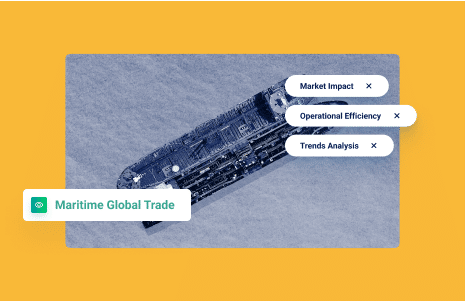What’s inside?
Since the beginning of the conflict in February 2022, the West has mostly taken a pragmatic stance, particularly regarding Russian oil trading. The two main goals have been:
- Keeping Russian oil flowing, so as not to accelerate a looming global recession
- Limiting Russian financial gains, to pressure the country in an attempt to halt (or at least limit) its invasion of Ukraine
To achieve these goals, the West quickly enacted a ban on Russian oil and many organizations adopted “moral sanctions” in accordance with their ESG policies, and to protect from financial and reputational harm. Then a price cap on Russian crude oil and later oil products (diesel, kerosene, and fuel oil) went into effect. Other trade sanctions are also live, with a main goal of blocking Russia’s access to the high-tech components needed by its military.
What can we learn by looking at trade flows?
Windward’s comprehensive report, released around the one-year anniversary of the launch of Russia’s war, explained how the war has significantly impacted trade flows out of Russia. We compared winter and summer, pre- and post-invasion, to analyze the effect of the war, and the bans and sanctions that resulted.
Main findings:
- The trade flow to the U.S. from Russian-affiliated ships stopped almost completely
- The trade line between Russia and Asia that goes through the Mediterranean and the Cape of Good Hope by Russian-owned vessels stopped almost completely… but we now know that this line is still very active, only it is populated by foreign-flagged vessels


A deeper look into Europe shows some interesting trade flow shifts:
- The Scandinavian and Volga-Don straits remained unaffected by the war and oil restrictions at the time the report was published
- Trade moved to the Mediterranean sea
- The northern side of Europe seems more active in 2022 – an interesting hub to keep an eye on

Port calls are another indicator of the effectiveness of the West’s attempts to limit Russia’s profits. For instance, by looking at vessels that called port in Russia and then called port in the U.S., UK, or EU, we learn that:
- Before the war, 496 cargo vessels (monthly average) called ports in the U.S./EU/UK after a port call in Russia. This number dropped to 241 post-invasion, a decrease of 51%
- The average monthly number of tankers decreased by 34% when comparing pre- to post-invasion. The greatest decrease was among crude oil tankers
Unlike the West, India, China, and other countries in Asia have maintained more supportive, or at least more ambiguous, policies toward trade with Russia. As a result, a zoom-in on India, China, and South Korea shows a significant increase in engagement with ships that recently called port in Russia.
- 182 cargo vessels (monthly average) called port in Russia pre-war and then continued on to India, China, and South Korea. This number rose to 270 post-invasion, an increase of 49%
- The average monthly number of tankers along these same routes increased by 48% when comparing pre- to post-invasion
Ports in North Africa also illuminate this trend. Since the beginning of the war, there was a 147% increase in port calls of tankers from Russia – most of which are crude oil tankers.
Windward’s report on the first year of the war provides valuable insights into how the conflict has affected global trade. The West’s efforts to maintain Russian oil flow while limiting the country’s financial gains have been successful to some extent, with a significant drop in trade flows between the U.S. and Russia.
Countries in Asia, such as India, China, and South Korea, have maintained more supportive policies towards trade with Russia, resulting in an increase in engagement with ships that have recently called port in Russia. The findings suggest that the East is keeping business moving, while the West continues to implement sanctions to pressure Russia to halt the invasion.
Windward’s full report goes far beyond this issue, also analyzing dry cargo and grain smuggling, an evolving trade trend between Iran and Russia, a deep dive into Russia-related DSPs, and much more!



